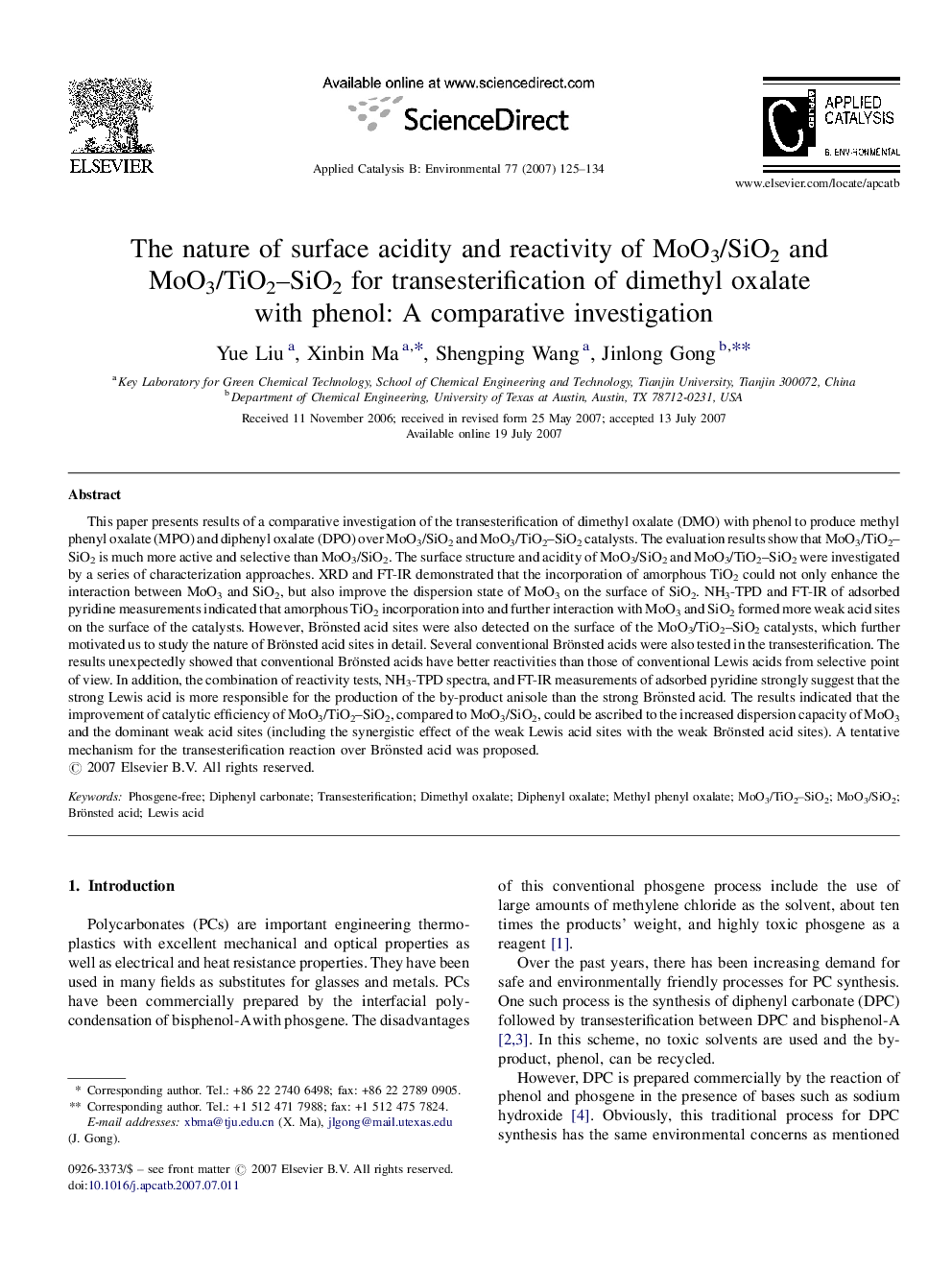| کد مقاله | کد نشریه | سال انتشار | مقاله انگلیسی | نسخه تمام متن |
|---|---|---|---|---|
| 48644 | 46516 | 2007 | 10 صفحه PDF | دانلود رایگان |

This paper presents results of a comparative investigation of the transesterification of dimethyl oxalate (DMO) with phenol to produce methyl phenyl oxalate (MPO) and diphenyl oxalate (DPO) over MoO3/SiO2 and MoO3/TiO2–SiO2 catalysts. The evaluation results show that MoO3/TiO2–SiO2 is much more active and selective than MoO3/SiO2. The surface structure and acidity of MoO3/SiO2 and MoO3/TiO2–SiO2 were investigated by a series of characterization approaches. XRD and FT-IR demonstrated that the incorporation of amorphous TiO2 could not only enhance the interaction between MoO3 and SiO2, but also improve the dispersion state of MoO3 on the surface of SiO2. NH3-TPD and FT-IR of adsorbed pyridine measurements indicated that amorphous TiO2 incorporation into and further interaction with MoO3 and SiO2 formed more weak acid sites on the surface of the catalysts. However, Brönsted acid sites were also detected on the surface of the MoO3/TiO2–SiO2 catalysts, which further motivated us to study the nature of Brönsted acid sites in detail. Several conventional Brönsted acids were also tested in the transesterification. The results unexpectedly showed that conventional Brönsted acids have better reactivities than those of conventional Lewis acids from selective point of view. In addition, the combination of reactivity tests, NH3-TPD spectra, and FT-IR measurements of adsorbed pyridine strongly suggest that the strong Lewis acid is more responsible for the production of the by-product anisole than the strong Brönsted acid. The results indicated that the improvement of catalytic efficiency of MoO3/TiO2–SiO2, compared to MoO3/SiO2, could be ascribed to the increased dispersion capacity of MoO3 and the dominant weak acid sites (including the synergistic effect of the weak Lewis acid sites with the weak Brönsted acid sites). A tentative mechanism for the transesterification reaction over Brönsted acid was proposed.
Journal: Applied Catalysis B: Environmental - Volume 77, Issues 1–2, 30 November 2007, Pages 125–134